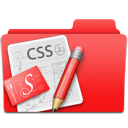Web Design Trends in 2011

What are the possible web design trends for 2011?
Faster loading designs are in.
 Users are demanding faster loading web sites, which almost rules out flash pages that take minutes to load. Slimmed down index pages with very few images, no audio, text rather than image ads, and easy on the eyes color schemes are expected to become the norm of the day.
Users are demanding faster loading web sites, which almost rules out flash pages that take minutes to load. Slimmed down index pages with very few images, no audio, text rather than image ads, and easy on the eyes color schemes are expected to become the norm of the day.
Mobile content will make its mark.
As more and more people are browsing the web from their cell phones, tablet PCs, handhelds, iPhones, and iPads. Even the latest e-book readers came with their own web browsers and some of them are even capable of streaming audio and video as well. Most web designer will be expected to create a mobile ready site off the bat, or create a mobile version of their designs. With the use of CSS3 and HTML5, matching the websites’ layout and the user’s devices capabilities is far easier and creating style sheets for smaller devices is no longer a daunting task. The trend towards “responsive designs,” which grew stronger during 2010, is definitely here to stay!
CSS3 and HTML5 come on strong.
 CSS3 comes with new features such as new border, color, background, and text effects, as well as new selectors, media queries, fonts, and speech. HTML5 comes with even more exciting new elements such as placeholders, editable content, local storage, email inputs, and better audio and video support. The latest versions of popular browsers such as Chrome, Firefox, Opera, and Safari already support most CSS3 and HTML5 properties, and so is Internet Explorer 9, which at the time of this writing is still in Beta.
CSS3 comes with new features such as new border, color, background, and text effects, as well as new selectors, media queries, fonts, and speech. HTML5 comes with even more exciting new elements such as placeholders, editable content, local storage, email inputs, and better audio and video support. The latest versions of popular browsers such as Chrome, Firefox, Opera, and Safari already support most CSS3 and HTML5 properties, and so is Internet Explorer 9, which at the time of this writing is still in Beta.
No more split content.
Even though we still see high authority websites splitting their content amongst several pages, hoping to display more ads and make more sales, the users have clearly responded negatively to this approach.
Interactive pages with little or no Flash.
 This will be achieved by using Javascript, which became more robust and which can be used to build much smaller applications, resulting in faster site loading. Cross-browser libraries such as JQuiery, which offers CSS manipulation, plug-in extensibility, events, DOM element selection, utilities, effects, and animations, will come in handy for many web designers.
This will be achieved by using Javascript, which became more robust and which can be used to build much smaller applications, resulting in faster site loading. Cross-browser libraries such as JQuiery, which offers CSS manipulation, plug-in extensibility, events, DOM element selection, utilities, effects, and animations, will come in handy for many web designers.
Platform-driven designs are also here to stay.
Layouts for the most popular of CSM platforms such as WordPress, Joomla, Drupal, Text Pattern, and Cushy CMS will continue to evolve. The expectations are that newer and better applications will make designing for the top platforms much more intuitive, and web designers that are familiar in detail with CMS will continue to be in high demand.
Web design for touch screen devices will increase in popularity.
The use of larger image icons, larger navigation buttons, smoother scrolling web pages, and magazine style layouts will make the web sites far easier to browse on a touch screen.
Typography will become a larger element of web design.
 Using application such as Typekit and Fontdeck will help designers deliver their messages across without having to make use of images, and will also allow them to choose from hundreds of different fonts.
Using application such as Typekit and Fontdeck will help designers deliver their messages across without having to make use of images, and will also allow them to choose from hundreds of different fonts.
Accurately predicting the direction, which Web design will follow is not an easy task, but we expect the web content to be even more user-friendly, less colorful and with fewer whistles and bells, but still capable of delivering multimedia rich experience to the users.
What are some trends you are either excited or not so excited to see? Please share with us in the comments.
